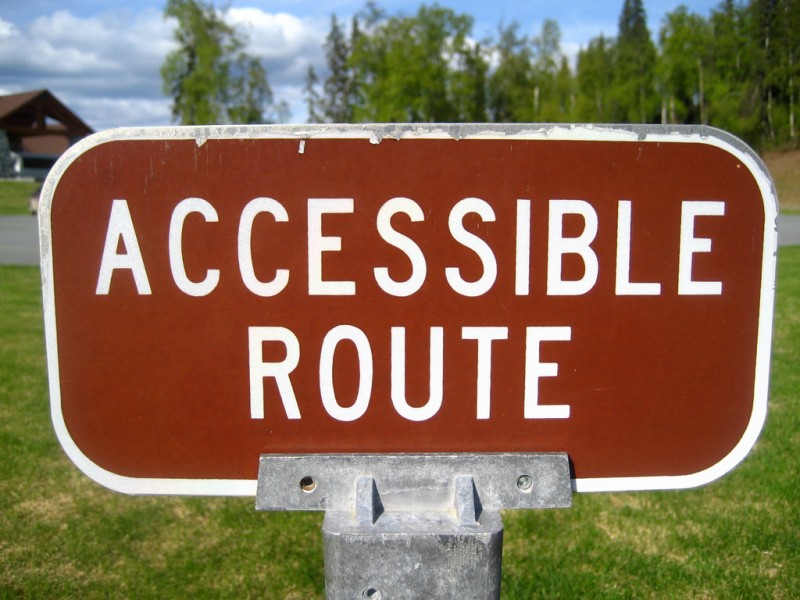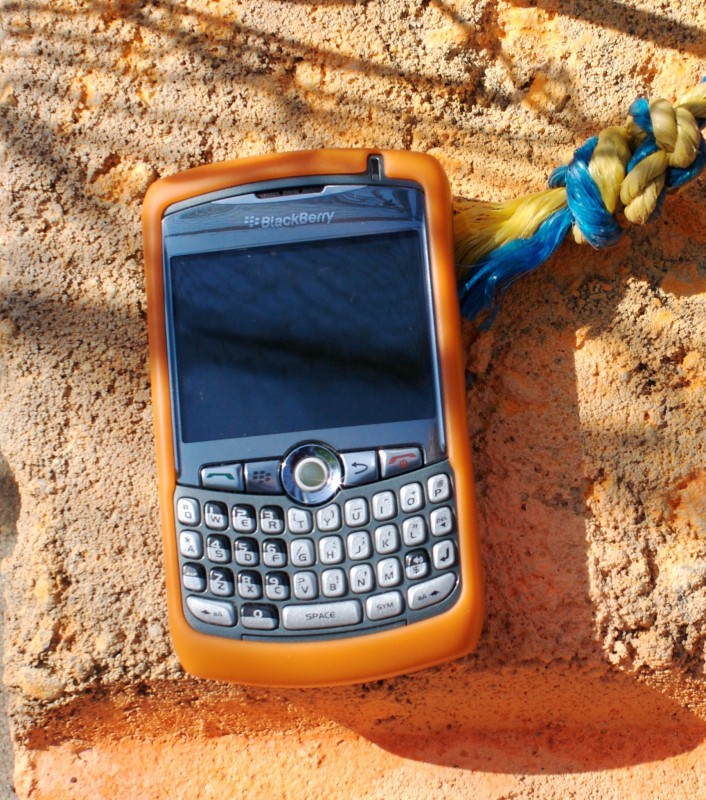Access for all
02 March 2016 – Sharon Leon
"Chasing the Frontiers of Digital Technology" responses, public engagement, digital history, The Public Historian, TPH 38.1

Photo credit: Jeremy Keith, on Flickr. CC BY 2.0 license
Andrew Hurley’s article, “Chasing the Frontiers of Digital Technology,” begins with the launch of the Virtual City Project in 1999 and brings us up to the present moment. In that span of time, Hurley and his colleagues at the University of Missouri-St. Louis (UMSL) experimented with building 3D immersive environments to support both K-12 educational instruction and public history work.
While the UMSL group was at work on the project, Internet users experienced the transition from Web 1.0 to Web 2.0–the transition from a read web to a read-write web.[1] With the more interactive web, many of us have been captivated by the promise of dialog and increased user engagement for our public history work. But, as all public historians know, doing history with the public is infinitely more difficult than doing history for the public. Hurley’s project team took on this challenge and more when they endeavored to design and develop a toolkit to allow cultural heritage organizations to create historical 3D immersive environments to support their work.
Hurley’s article zeros in on the lessons learned from one implementation of the toolkit: the Old North St. Louis Restoration Group’s effort to use 3D visualizations to support community deliberations about various neighborhood redevelopment options. The project team encountered difficulty reaching their surrounding community members because those neighbors were often caught on the wrong side of the digital divide–without the technical infrastructure to adequately deal with the digital resources being presented to them. These experiences provide important cautions for every public historian who wants to integrate all sorts of digital elements into his or her work, and I want to suggest several approaches that can help head these difficulties off at the pass.
Planning for the Digital Divide
The underlying causes of the so-called digital divide are legion, but we can do some things to assure that our users can engage the materials that we bring to our shared conversations. As Hurley argues, selecting the newest technology is not always the best answer. A little bit of research about community demographics and digital access before the design and development process begins can go a long way toward helping public historians design and build digital public history projects that serve the needs of their core audiences.
The Pew Research Center’s group on the Internet, Science & Tech provides the most up-to-date survey data about Internet access, device adoption, and usage habits for the United States. Together, its publications offer a picture of digital capacity in underserved communities. For example, the most recent survey data tells us that, while 84 percent of American adults use the Internet, those without college degrees and those whose income is low lag behind somewhat.[2]
A look at the diffusion of home broadband access is also revealing. African Americans, rural Americans, and those with lower incomes are moving away from broadband in favor of using smartphones to access the Internet.[3] Individuals who do not have broadband access cite cost as the largest factor in their decision against purchasing that service. Many of that group also felt that their smartphones offer them adequate connectivity, but as the report notes, with this shift to mobile devices come the challenges of data plan ceilings, data entry issues, and low bandwidth for streaming media.

A Blackberry. Photo credit: Sharon Leon
Moreover, the smartphone marketplace is not occupied solely by the iPhone. The most recent industry data, published in July 2015, places the iPhone at 44 percent of the market, while Android phones hold nearly a 52 percent share. Users of Microsoft, Blackberry, and Symbian systems make up the difference.[4] This device distribution suggests that any project team that only produces an iPhone application is willingly turning away well more than half of their potential users.
Even this cursory review of the relevant data allows us to extrapolate a set of development requirements that would significantly ease the barriers to access for low-income communities. Our digital public history work should be designed to be lightweight and streamlined with optimized images, styles, and media. Cumbersome, resource intensive work that might require the installation of external software packages will not result in widespread engagement among people who do not have the hardware and bandwidth necessary for access.
A more successful approach would involve designing projects specifically to operate through a mobile web browser (see our Histories of the National Mall guide for a good example of this approach), rather than require the user to download large applications that call for significant storage space and processing power. This method suggests an alignment with the Minimalist Computing movement, which in the name of sustainability and access urges us to consider building and rendering our work in the least resource-intense way possible.[5] These approaches will likely hold significant promise for digital public historians as they move forward.
Making Work Accessible for All
While unequal access to hardware and infrastructural resources is a significant problem that digital public historians must plan for, if not remediate, there are other issues of access that are wholly within our power to address and solve: interface and user experience design. Intentional design that lowers barriers to access for users of all abilities is good public history practice and opens up our capacity to pursue truly democratic and collaborative work.
The basic starting point for thinking about accessibility is the federal Section 508 standards. Originally published in 2000, these standards are in the process of being refreshed to reflect the recommendations of the W3C Web Content Accessibility Guidelines.[6] The principles outline the ways that software, websites, and multimedia need to be built to be accessible to people with physical, sensory, or cognitive disabilities. Such accessibility requires designing digital projects that are compatible with assistive technologies or that render materials in alternate formats.
While the federal government has articulated a set of standards, the Accessible Future project has been working hard over the past several years to train humanists to create accessible digital projects that live up to or surpass those standards. Though the training workshops have concluded, the project site offers a very useful set of resources that should be required reading for every digital public historian.[7] Furthermore, we should all take a moment to evaluate the accessibility of our digital products using some of the very good free tools gathered by the Web Accessibility Initiative.[8]
While the idea of developing digital public history work that is visually stunning and makes use of complex 3D rendering techniques is attractive for a variety of reasons, the products are rarely accessible. Just as developing for only one operating system excludes large numbers of users, failing to uphold accessibility guidelines means developing digital public history work that is not available to the whole community. Thus, a full commitment to usability requires us to do specific research about the technical capacities and habits of our communities and to work hard to render our work in the most accessible and least resource-intense way. These efforts will go a long way toward removing unnecessary barriers to community participation and engagement with our work.
[1] Tim O’Reilly, “What is Web 2.0,” O’Reilly, September 30, 2005, http://www.oreilly.com/pub/a/web2/archive/what-is-web-20.html.
[2] Andrew Perrin and Maeve Duggan, “Americans’ Internet Access, 2000–2015,” Pew Research Center, Internet, Science & Tech, June 26, 2015, http://www.pewinternet.org/2015/06/26/americans-internet-access-2000-2015/.
[3] John B. Horrigan and Maeve Duggan, “Home Broadband: 2015,” Pew Research Center, Internet, Science & Tech, December 21, 2015, http://www.pewinternet.org/2015/12/21/home-broadband-2015/.
[4] “comScore Reports July 2015 US Smartphone Subscriber Market Share,” comScore, September 3, 2015, https://www.comscore.com/Insights/Market-Rankings/comScore-Reports-July-2015-US-Smartphone-Subscriber-Market-Share.
[5] Minimal Computing: A Working Group of GO:DH, http://go-dh.github.io/mincomp/.
[6] “Section 508 Standards,” United States Access Board, https://www.access-board.gov/guidelines-and-standards/communications-and-it/about-the-section-508-standards/section-508-standards; “About the ITC Refresh,” United States Access Board, https://www.access-board.gov/guidelines-and-standards/communications-and-it/about-the-ict-refresh; “Web Content Accessibility Guidelines (WCAG) 2.0,” World Wide Web Consortium, https://www.w3.org/TR/WCAG20/.
[7] “Readings,” Accessible Future, http://www.accessiblefuture.org/readings/.
[8] “Web Accessibility Evaluation Tool List,” World Wide Web Consortium, https://www.w3.org/WAI/ER/tools/.
~ Sharon M. Leon is the director of public projects at the Roy Rosenzweig Center for History and New Media and is an associate professor of digital history at George Mason University.
Editor’s note: In “Chasing the Frontiers of Digital Technology,” published in The Public Historian (38.1), Andrew Hurley discusses the implications of the digital divide when working with diverse audiences and striving for public engagement. This is the first of five posts that will be published by The Public Historian responding to Hurley’s article.



